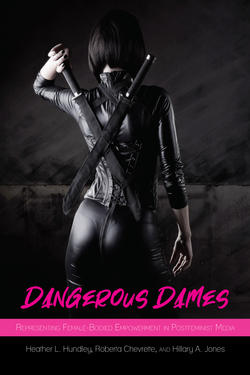Читать книгу Dangerous Dames - Heather Hundley - Страница 2
На сайте Литреса книга снята с продажи.
ОглавлениеADVANCE PRAISE FOR
Dangerous Dames
“Dangerous Dames is a thoughtful and richly descriptive continuation of the critical conversation begun in Bad Girls. As definitions and understandings of feminism continue to evolve, we remain tasked with attending to the interaction between media representations and both new and older generations of cultural audiences. The book identifies the material conditions which necessitate critique, explains the significance of popular representations of women’s lives, and offers a clearly articulated justification for selection of the films and other media examined in the book. Dangerous Dames demonstrates that cultural ambivalence is still in play with representations of women; the female characters can resist— but not dismantle—the structural inequalities in contemporary American culture. The authors’ selection of films demonstrates the hunger that exists for narrative empowerment of women in popular culture while carefully walking with the reader through the possibilities for change arising from those depictions. The book convincingly argues that while popular imagination has evolved progressively since Bad Girls was published, it still does not fully encompass the burden of inequality on the lives of women and girls.”
—A. Susan Owen (University of Puget Sound) and Sarah Stein (North Carolina State University), co-authors of Bad Girls: Cultural Politics and Media Representations of Transgressive Women
“Dangerous Dames skillfully coordinates critical encounters with contemporary media texts. Through sustained analysis of texts like Hunger Games, Wonder Woman, Proud Mary, Caprica, and Deus Ex, Hundley, Chevrette, and Jones astutely demonstrate the cultural and political stakes of representing powerful, female-bodied characters. Across their case studies, they investigate the politics of aesthetics, arguing that particular aesthetics shape (but do not determine) political efficacies and asserting a tempered but hopeful relationship between media representations and structural change. Throughout, the authors imply the question—What does feminism want?—to which they respond: To be understood as plural, variegated, contestatory, and dynamic. Compellingly, they mark their own analytic starting point as intersectional, and they model, for beginners and experts alike, how to select and employ specific conceptual resources like performativity, necropolitics, and posthumanism to best unpack and illuminate the case under investigation. Media fans themselves, Hundley, Chevrette, and Jones invite us to struggle with our fandom and to be accountable for the joy or pleasure we take from media consumption as they demonstrate how recent pop culture texts are riddled with cultural and political ambivalence. Dangerous Dames helps us to find the words to explain our complicated relationships with media texts that feel—that are, we hope—feminist and progressive.”
—Daniel C. Brouwer (Arizona State University)
